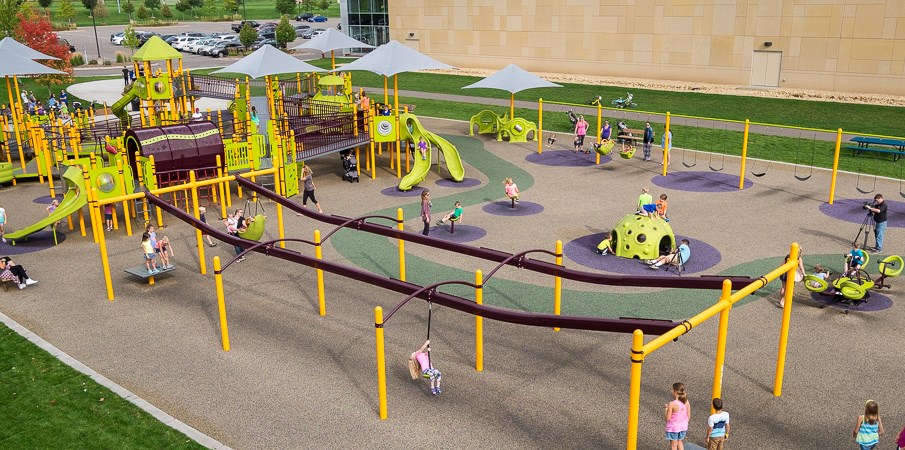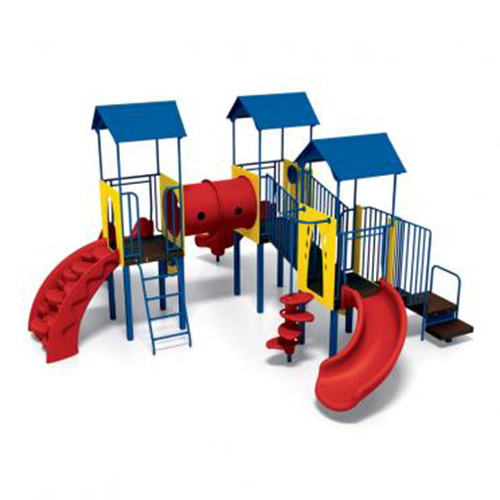Creating Inclusives Play Spaces for All Children to Enjoy
All children need to have a space where they can play, create social relationships and develop their critical thinking, cognitive, and physical skills. That is why in recent years there has been a growing demand for more inclusive playgrounds. Landscape Structures suggests that "In order to create a truly inclusive playground, it not only needs to be accessible, but also age and developmentally appropriate and stimulating to the senses." Below you will find ways to make a playground inclusive and fun for children of all abilities.
1) Highlight Various Interests
While one child may thoroughly enjoy high slides, another child might be terrified of the height associated with the slide. Due to the conflicting interests of children it's important then to consider equipment that can be multi functional. For example, you may consider two separate slides so that there are varying heights to suit the different ages and comfortableness of the child. As seen in the playground above designed by Landscape Structures, there are 3 different slides at varying heights and steepness.
2) Consider Sensory Play
When considering a play structure it's important to consider that children with Autism or Sensory Processing Disorders prefer sensory stimulation. The PlayBooster® play structure by Landscape Structures features sand play elements, auditory and musical activities, swings, sensory-rich play panels, spinners and an accessible ramp play structure for kids ages 5 to 12. Above you can see a sensory-rich play panel that is encouraging the child to trace a path for the camper to get back to their campsite.
3) Incorporate Communication Skills
Even though interactive games commonly played on the playground increase cooperation and communication skills, certain play structures can also encourage additional skill development. As shown above, this playground by Landscape Structures includes a drum set. By incorporating music into the playground it allows children to realize how they are contributing to the sounds of the immediate surroundings.
4) Choose Cognitive Play Equipment
Whether they decide to wait in line to go down the slide or choose a piece of equipment that is less busy, children are constantly forced to make choices while on the playground. Having to make these choices is what helps a child develop their cognitive skills.
Another way you can enhance their cognitive skills is by incorporating structures that feature other skill building tasks. For example, in the photo above the child is playing on the Ball Maze Panel and engaging with their problem solving skills and strategic thinking.
5) Add Social Areas
In order for an inclusive playground to exist, children need to be socially included. This is why it's important to have areas where children can feel emotionally secure and encouraged to interact with others. In the picture above you can see how this playground added a piece of equipment that is able to be used by a group of students.
Want to see more inclusive playgrounds? See an assortment of playgrounds below or search "playgrounds" on CADdetails.com
All photos © Landscape Structures















